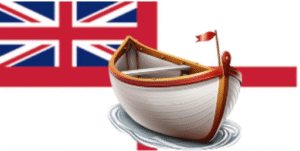DIY Sail Repair in the UK: A Step-by-Step Guide
DIY Sail Repair in the UK: A Step-by-Step Guide
Sailing is a beloved pastime for many in the UK, offering a unique blend of thrill and tranquility. However, the joy of sailing can quickly be disrupted by a torn or damaged sail. While professional repairs are always an option, they can be costly and time-consuming. For those with a bit of DIY spirit, repairing a sail yourself can be a rewarding and cost-effective solution. In this guide, we’ll walk you through the steps of DIY sail repair, helping you get back on the water in no time.
Understanding the Basics of Sail Repair
Before diving into the repair process, it’s essential to understand the basic structure and material of your sail. Most sails are made from durable fabrics like Dacron or Kevlar, designed to withstand the elements. However, even the strongest materials can suffer damage from wear and tear, UV exposure, or unexpected weather conditions.

Identifying the type of damage your sail has sustained is the first step in the repair process. Common issues include tears, frayed edges, and broken seams. Each type of damage requires a slightly different approach, so it’s crucial to assess the situation carefully.
Gathering Your Tools and Materials
Having the right tools and materials on hand is crucial for effective sail repair. Here’s a list of essentials you’ll need:
– Sail repair tape or adhesive
– Heavy-duty sewing needle
– UV-resistant thread
– Scissors
– Measuring tape
– Seam ripper
– A flat, clean workspace
These items are readily available at most marine supply stores in the UK, or you can order them online for convenience.
Step-by-Step Sail Repair Process
Step 1: Clean and Assess the Damage
Start by laying out your sail on a flat, clean surface. Use a mild soap and water solution to clean the area around the damage thoroughly. This step ensures that no dirt or debris will interfere with the repair process. Once clean, carefully assess the damage to determine the best repair strategy.
Step 2: Prepare the Area for Repair
For tears and rips, use scissors to trim any frayed edges. If you’re dealing with a broken seam, use a seam ripper to remove the damaged stitching. Measure the length of the tear or seam to ensure you have enough repair tape or thread.
Step 3: Apply Sail Repair Tape
For small tears or punctures, sail repair tape is a quick and effective solution. Cut a piece of tape slightly larger than the damaged area, ensuring you have enough overlap on each side. Press the tape firmly onto the sail, smoothing out any air bubbles to create a strong, seamless bond.
Step 4: Sew the Damaged Area
For larger tears or seam repairs, sewing is often necessary. Thread your heavy-duty needle with UV-resistant thread, and begin stitching along the tear or seam. Use a zigzag stitch for added strength, and ensure your stitches are tight and consistent. If you’re re-sewing a seam, follow the original stitch lines as closely as possible.
Step 5: Reinforce the Repair
For added durability, consider reinforcing the repair with an additional layer of sail repair tape. This step is particularly important for high-stress areas of the sail. Apply the tape over the stitched area, pressing firmly to ensure it adheres properly.
Preventative Measures for Future Sail Care
Once your sail is repaired, taking preventative measures can help extend its lifespan and reduce the need for future repairs. Here are a few tips:
– Regularly inspect your sails for signs of wear and damage.
– Store sails in a cool, dry place when not in use to prevent UV and moisture damage.
– Wash sails with fresh water after each use, especially after exposure to saltwater.
– Consider applying a UV-protective spray to shield your sails from sun damage.
Conclusion
DIY sail repair can seem daunting at first, but with the right tools, knowledge, and a little patience, it’s entirely manageable. Not only does it save money, but it also offers a sense of accomplishment and a deeper connection to your sailing adventures. By following this step-by-step guide, you’ll be well-equipped to tackle most common sail repairs, ensuring your time on the water remains as enjoyable as possible. So, next time you face a damaged sail, remember that a little DIY effort can go a long way in keeping your sailing dreams afloat.
Get The Spares You Need
Add CTA sections description.










